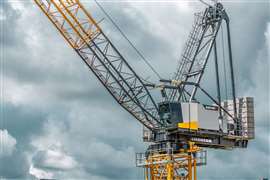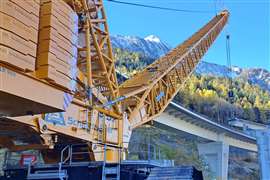EY: UK government facing £1.6 billion infrastructure funding gap
30 September 2024
The UK government must find £1.6 trillion (US$2.1 trillion) of capital by 2040 to fund new infrastructure as high inflation costs push up prices at a time when government borrowing is coming under pressure.
A new report from accountancy giant EY, assesses the UK’s existing and forecast capital spending commitments identified by the National Infrastructure Commission, the Department for Health and Social Care, and the Ministry of Defence.
 UK Chancellor Rachel Reeves. Photo: Reuters
UK Chancellor Rachel Reeves. Photo: Reuters
The list includes a wide range of projects, from new road and rail projects to decarbonising public buildings and funding social infrastructure like hospitals and schools.
Excluding projects which will be funded by the private sector or those which are already underway, EY estimated that the total list would require around £1.8 trillion (US$2.4 trillion) in cumulative capital spending over the next 15 years.
Under the current fiscal rules which the Labour government adopted from the previous Conservative administration, which require public debt to decrease as a percentage of GDP by the end of a five-year period, EY estimates that the government could only cover £900 billion (US$1.2 trillion) by public spending, leaving a £700 billion (US$937 billion) shortfall.
And if the same level of infrastructure project cost overruns of the last decade recurs in the coming 15 years, almost £1trn could be added to the shortfall, EY said.
This high collective cost is partially due to the impact of economic headwinds. Persistently high levels of inflation have already significantly increased the cost of capital projects in recent years. PPI inflation, an indicator of manufacturer and infrastructure costs, peaked at 24.4 per cent in the UK in 2022, meaning that a capital project undertaken in the UK in 2016 was on average already 46 per cent more expensive by 2022.
“Almost every Western country is facing a growing gap between the capital investment needed to meet green, economic and strategic priorities, and the amount governments can afford to spend,” said Mats Persson, Partner at EY Parthenon. “Plugging this gap will require the entire value chain, from policymakers through to developers and investors, to urgently come together to find alternative sources of capital and utilise new technologies to bring down the cost of these projects.”
The report comes as UK chancellor Rachel Reeves is considering loosening the government’s fiscal rules, allowing the government to increase borrowing to pay for higher levels of public investment.
In August the UK’s national debt reached 100 per cent of GDP, the highest level since 1961 as monthly borrowing rose by more than expected.
Based on the projections, EY said that meeting the remaining shortfall without government spending would require private sector investment in UK infrastructure to more than double from the £568bn (US$760 billion) currently projected to be required by 2040.
The report identifies three key measures that, if deployed at a project level in the UK, have the potential to plug the investment gap: Leveraging a range of alternative investment models that have worked on individual projects worldwide; incorporating a series of efficiency improvements into infrastructure projects, especially into the design phase, which could reduce the average cost of a capital project by 20-25%; and deploying AI and other technology to produce accurate cost analysis and highlight savings opportunities which EY says could cut costs by 10-15%, driving £158bn in savings across the UK infrastructure pipeline by 2040.
Sayeh Ghanbari, Business Consulting Leader at EY, said: “Infrastructure projects have traditionally been slow to incorporate new technologies, even in areas where it’s widely accepted as best practice. Unless the infrastructure sector significantly accelerates its adoption of productivity-enhancing tech, the eventual spending shortfall could delay or even prevent the completion of critical, national priority capital projects. The acceleration of AI presents an opportunity for the sector to reverse this trend.”




